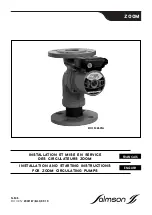
Chapter 3: Remote control
Note: You may need a Remote Pilot Certificate to operate ParaDrone remotely, or an equivalent
in your jurisdiction.
ParaDrone uses LoRa long-range radio for remote operation. LoRa is a protocol that uses
unlicensed radio spectrum to do extremely long range communication with low power
requirements. The Heltec ESP32 LoRa v2 board has a builtin LoRa transceiver. To receive
location updates on the ground, and to send remote control commands to ParaDrone, it is
necessary to use a LoRa gateway between an android phone and ParaDrone.
Ground crew can override autopilot using the android app plus
the LoRa relay device. Toggle position is controlled using the
touchpad at the bottom of the android app.
The touchpad operates in two modes: single-touch and
multi-touch. In multi-touch mode, left and right toggles are
controlled separately from the left and right sides of the
screen. In single-touch mode, touch the right side to pull the
right toggle, touch the center to pull both toggles (for example
to flare for landing).
The app sends the desired toggle position to ParaDrone. The
ParaDrone device tracks estimated toggle position, and will
apply motor control to change to a new desired toggle position.
If ParaDrone loses signal from the app, it will stay at the last
toggle position for 10 seconds, and then revert to autopilot
control.
Remote control device
The remote control device is just a ESP32 microcontroller with LoRa and bluetooth radios. A 3d
printed case is included in the ParaDrone project files, but is not strictly necessary. The case
includes two variations: with and without a battery. If you don’t include a battery, you will need to
power the remote control device with USB.
5



































